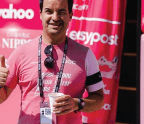
‘Will the Tour de France once again become an event where competitors will no longer be grouped according to their nationality or region, but instead be hired by their usual bosses, teams and sponsors?’ pondered Serge Lange in the pages of the Gazette de Lausanne on 29th September 1961. ‘We’ve been talking about it for a very long time. According to a colleague, it’s done: the return of commercial teams to the Tour in 1962 is an established fact.’
In the late 1920s Henri Desgrange had grown disillusioned with his race, frustrated with riders on opposing trade teams colluding. He’d tweaked the race format to try.






